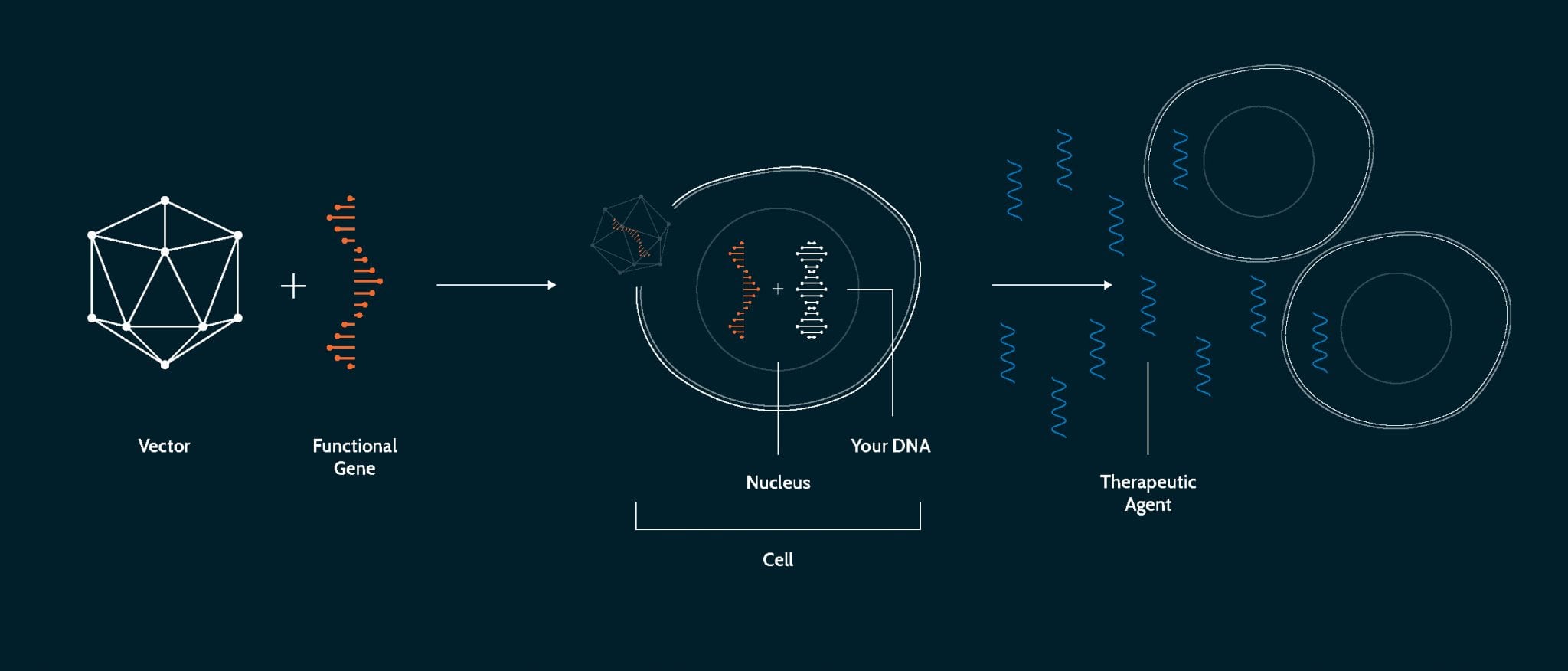What is AAV Gene Therapy?
Here's how the NAV Technology Platform works:

First, our scientists insert the gene of interest (that is, either the missing/defective gene or a gene to create a therapeutic protein) into a NAV Vector. A NAV Vector is a modified adeno-associated virus (AAV), which is not known to cause disease in humans. It is common for viruses to be used as vectors in gene and cell therapy. The NAV Vector acts as a delivery vehicle, transporting and unloading the gene into cells where the gene triggers production of the protein the body needs.
Our NAV Technology Platform includes more than 100 novel AAV vectors, including AAV8, AAV9 and AAVrh10, many of which are tailored to reach specific areas of the body where the gene is needed most. For example, gene therapy delivered to the liver has the potential to treat metabolic diseases like hemophilia, whereas gene therapy designed to reach the central nervous system (brain and spinal cord) may primarily impact symptoms of diseases that affect the brain and cognition.
Next, the NAV Vector is administered into the patient by injection or infusion, and is expected to make its way to cells that need the protein. The NAV Vector is designed to reach the target cells and deliver the gene it is carrying, enabling the cells to make the protein the body needs. These genes have the potential to correct disease by triggering production of a therapeutic protein or by allowing the body’s natural mechanisms to work the way they were intended.
Because gene therapies may have a long-term effect, a single administration of NAV Gene Therapy has the potential to do the same work as years of conventional chronic therapies.

